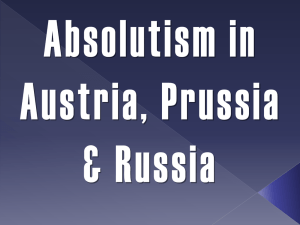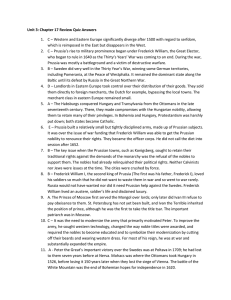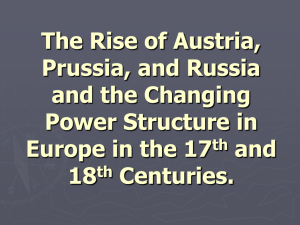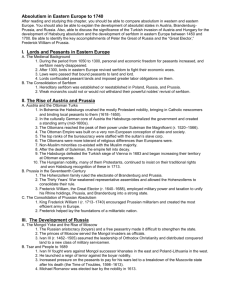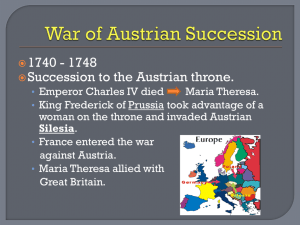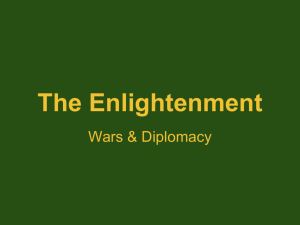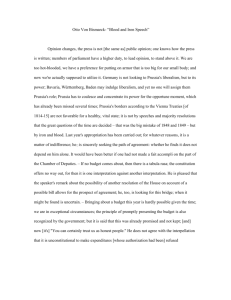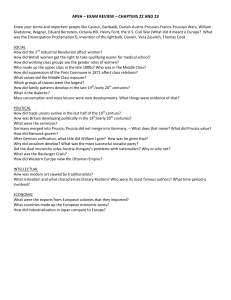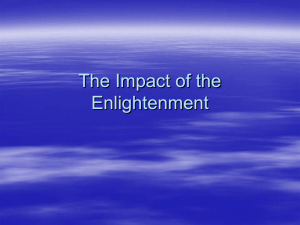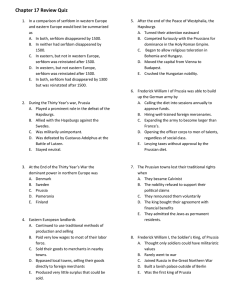Absolutism in Eastern Europe
advertisement
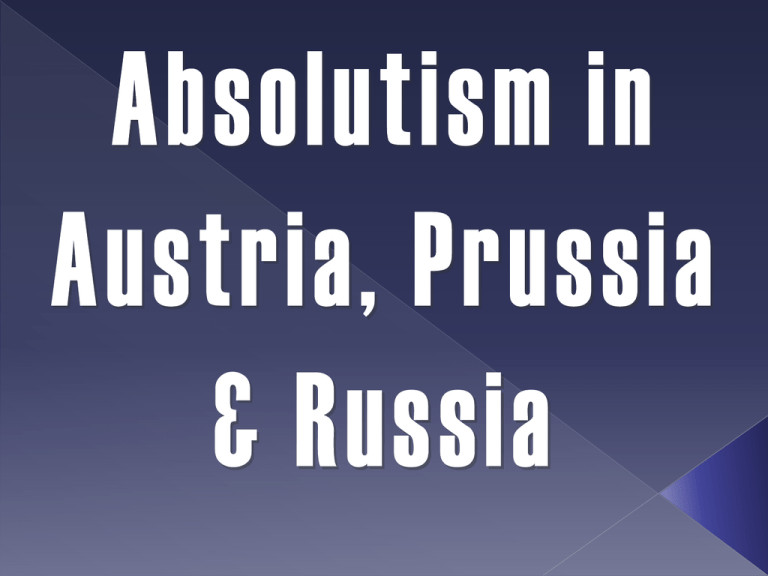
AUSTRIAN NETHERLANDS Habsburg Family Crest Leopold I Holy Roman Emperor (r.1657-1705) o Austria turned inward and eastward after the Thirty Years’ War o Serfdom increased, Protestantism was wiped out, and absolutism was achieved o The Habsburgs crushed the Protestant nobility, land was given to the Catholic soldiers, binding local peasants to them o Siege of Vienna (1683) – Habsburg, with Polish support, defeated the Ottoman Turks and began increasing their territory o In 1686, Austria captured the capital of Hungary. In 1699, acquired most of Hungarian land. o Supported the English against the French in the War of Spanish Succession. (against Bourbons taking over Habsburgs in Spain) Charles VI (r. 1711-1740) Created the Pragmatic Sanction to ensure his daughter, Maria Theresa, would inherit Habsburg lands and become queen o Pragmatic Sanction stated that the Habsburg possessions of Austria, Bohemia, and Hungary should never be divided Maria Theresa (r. 1740-1780) Went to war with Prussia in the War of Austrian Succession Serfdom in Eastern Europe to 1740 o Hereditary serfdom took place in Poland, Prussia and Russia o Peasants were bound to their lords and the land from one generation to the next Serfdom increased because of political not economic reasons Westerners began to regard eastern Europe as culturally and morally inferior Peasants and middle class had no chance for advancement Landlords controlled the courts (justice system) Overall the peasants had less power in Eastern Europe than in Western Europe Remaining questions for Ch.13 will be due on Wednesday. (E.C. if turned in today) Hohenzollern Family Crest The Hohenzollern family ruled the electorate of Brandenburg and Prussia within the Holy Roman Empire The Thirty Years’ War weakened the HRE and allowed the Hohenzollerns to consolidate their absolutist rule Frederick William (the Great Elector) built a strong Prussian army and infused military values into Prussian society after the war. AUSTRIAN NETHERLANDS King Frederick of Prussia (r.1701-1713) Separated Prussia from Poland. Supported the Habsburgs during the War of Spanish Succession Acquired the title “King in Prussia” King Frederick William I (r.1713-1740) “The Soldier-King” Frederick William I: Most talented reformer, established Prussian absolutism Infused strict military values into the whole society Infatuated by tall soldiers Created a centralized bureaucracy, Prussia almost always at peace Frederick William I encouraged Prussian militarism and created the best army in Europe The Junkers, noble landowners, became the military elite and Prussia a militarist state Frederick II (the Great) (r.1740-1786) Invaded Austria when Maria Theresa became its ruler. It is known as the War of Austrian Succession. The War of the Austrian Succession 1741 – 1748 o Austria loses region of Silesia to Prussia. Рοссий Romanov Family Crest Рома́нов Michael Romanov was elected tsar by the boyarsRussian nobility in 1613 Romanovs brought about the total enserfment of the peasants, while the military obligations on the nobility were relaxed Peter the Great emerged as Tsar of Russia Peter the Great was committed to a policy of westernization in Russia. However, persuading Russians to change their way of life proved difficult. To impose his will, Peter became the most autocratic of Europe’s absolute monarchs. Пётр I During his reign he: forced the boyars, or landowning nobles, to serve the state or army for life. imported western technology and culture and hired Western advisors. insisted that the boyars shave their beards and wear western-style clothing. used autocratic methods to push through social and economic reforms. brought all Russian institutions under his control. imposed policies which caused the spread of serfdom. Russian peasant life became extremely difficult People were taxed heavily Serfs were arbitrarily assigned to work in factories and mines Peter created the largest standing army in Europe and set out to extend Russian borders to the west and south. He unsuccessfully fought the Ottomans in an attempt to gain a warm-water port for Russia in the Black Sea. Made compulsory education away from home for higher classes mandatory (5 years). Controlled the Orthodox Church. Had his son tortured and killed for disobeying and opposing Peter’s policies. Peter engaged in a long war with Sweden, and eventually won land along the Baltic Sea. On that land, Peter built a magnificent new capital city, St. Petersburg. He hired a navigator to explore what became known as the Bering Strait between Siberia and Alaska.
